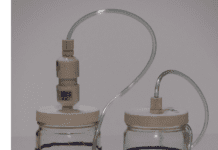Sail Prices
I keep reading in your publication-and others-how sailors will order new sails based primarily on price-bids. Years ago, before computer designed sail programs were developed, one would select a sailmaker based on his design expertise, especially if one was racing. Has computer design technology and fabric technology reached a level with major (or most) sailmakers that the only difference today is in price? I priced a sail recently with four major sailmakers and came up with prices that varied as much as 35% with similar (?) cloths. How does one judge beforehand whether the lowest price is best or just cheap; and, the highest price is actually the very best-or just high priced.
This is a major expenditure with no real guidelines! Care to comment?
Harry Walcoff
via e-mail
The February 1, 1999 issue has a special report on the sailmaking industry. The answer to your question, we think, is that just about any loft can make a good sail, and any loft occasionally makes mistakes and produces a bad sail. They all tout their various designs, almost exclusively designed by computers-which seem to mostly focus on how the panels are oriented. Some push Dacron for cruisers, others are making cases for laminates. Most of the designs are pretty good, but differences in materials can be significant.
When comparing bids, check cloth weights, standard features such as corner reinforcements and options such as reef points and leech lines.
When you see that people win races with nearly every brand, you begin to think that its mostly hype. This may be an over simplification, but unless you are a serious racer, more important criteria are price and service. Were willing to pay a bit extra to have a local loft build a sail, someone we can go back to with a problem and get quick, courteous service.
Fall shows are a good time to price sails as discounts are offered to help keep the workers busy over the slow winter months.
The significant price differences you were quoted are fairly typical of our surveys, though the same lofts are not necessarily always the highest or lowest.
Cost Differences in Boats
It would be of great interest to me if you would analyze three similarly sized boats that have significant price differences. Im curious as to what the construction and equipment differences are and if they are really worth the price.
I am a complete neophyte about boat construction. I have sailed Hunters, Catalinas and Beneteaus (Fords, Chevies, etc.). Just from my readings in magazines I have come to assume that Island Packets, Swans, Oysters, etc., are better, but Im leery as to just how much better they can be.
G.M. Boyer
Littleton, Colorado
Cost of a boat, and to some extent quality, is, as with any product, mostly a matter of materials and man-hours. Other factors that affect cost include marketing (cost of advertising, etc.) and method of distribution (middle men such as dealers).
Sticking to the boats themselves, most large volume production builders like Hunter and Catalina use polyester laminating resin and lots of it. A higher-end boat, such as a Morris, uses vinylester resin (more expensive, but bonds better and resists blistering better). A boat that is vacuum-bagged or laid up using resin infusion has a higher content of fiberglass and less resin, and so is stronger and lighter, too. From the forgoing, one can see that Hunter and Catalina enjoy savings by buying larger quantities of materials such as resin. On the other hand, a Hinckley or other semi-custom boat that is vacuum-bagged or SCRIMPed will cost more not only because the builder buys in smaller quantities, but because he has the added expense of the apparatus and time consumed associated with closed molds.
Production builders try to contain costs everywhere, from using thinner wall and shorter stanchions for the lifelines to iron keels instead of lead (Beneteau and Hunter do a lot of iron keels).
Then come man-hours. The most costly part of building a boat is fabricating the interior. The hull is only 10-15% of total finished cost. A wood interior, with each piece hand-fitted, is labor intensive. Thats why high volume builders use one-piece molded fiberglass pans that incorporate all of the berths, galley, etc. A huge savings.
We could go on…expensive tapered spars which eliminate weight aloft (better for stability) vs. telephone pole spars that are the same diameter from top to bottom, quality of hardware, rope, pumps, etc. They all add up.
An understanding of these differences certainly does help make sense of the market.




































